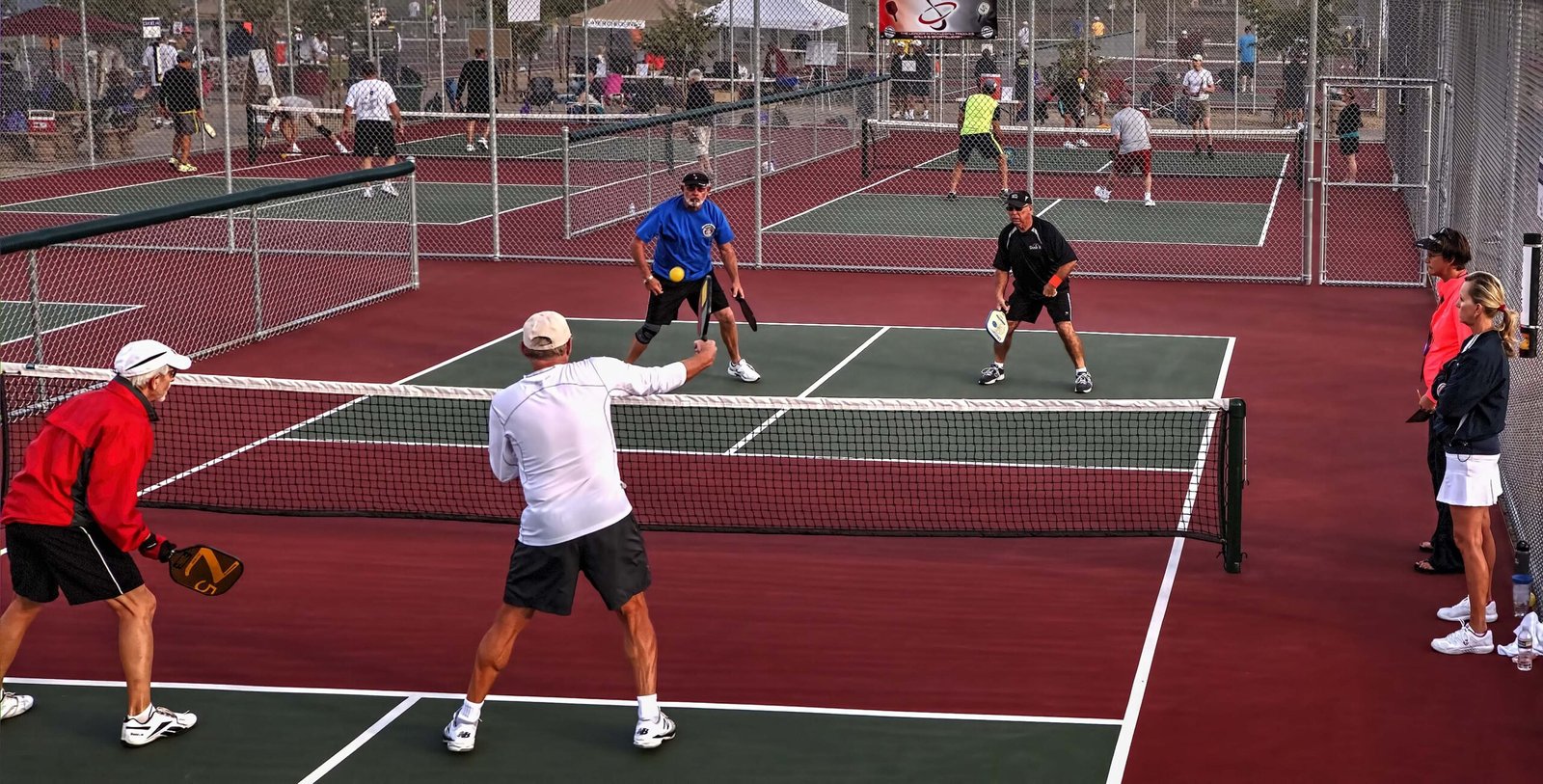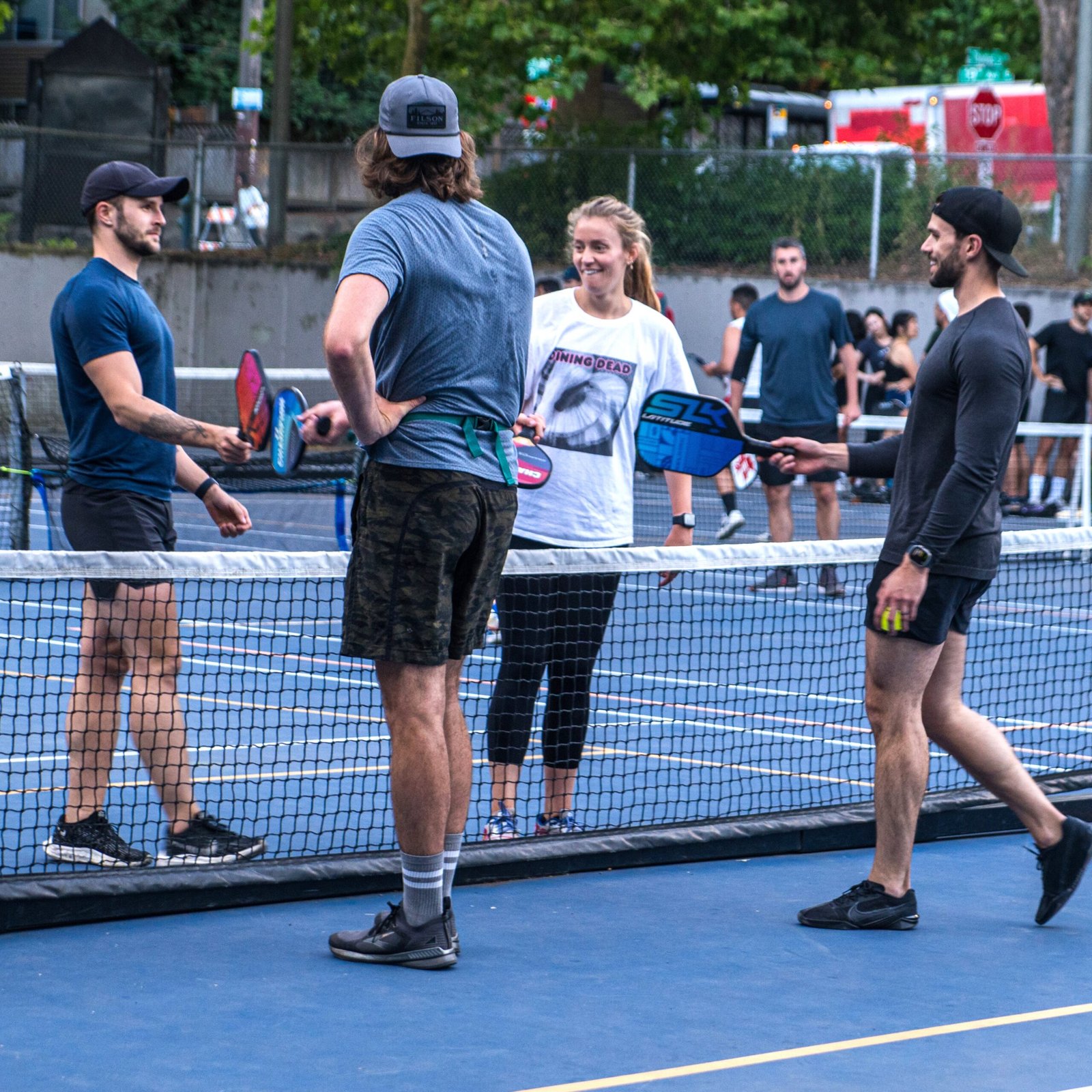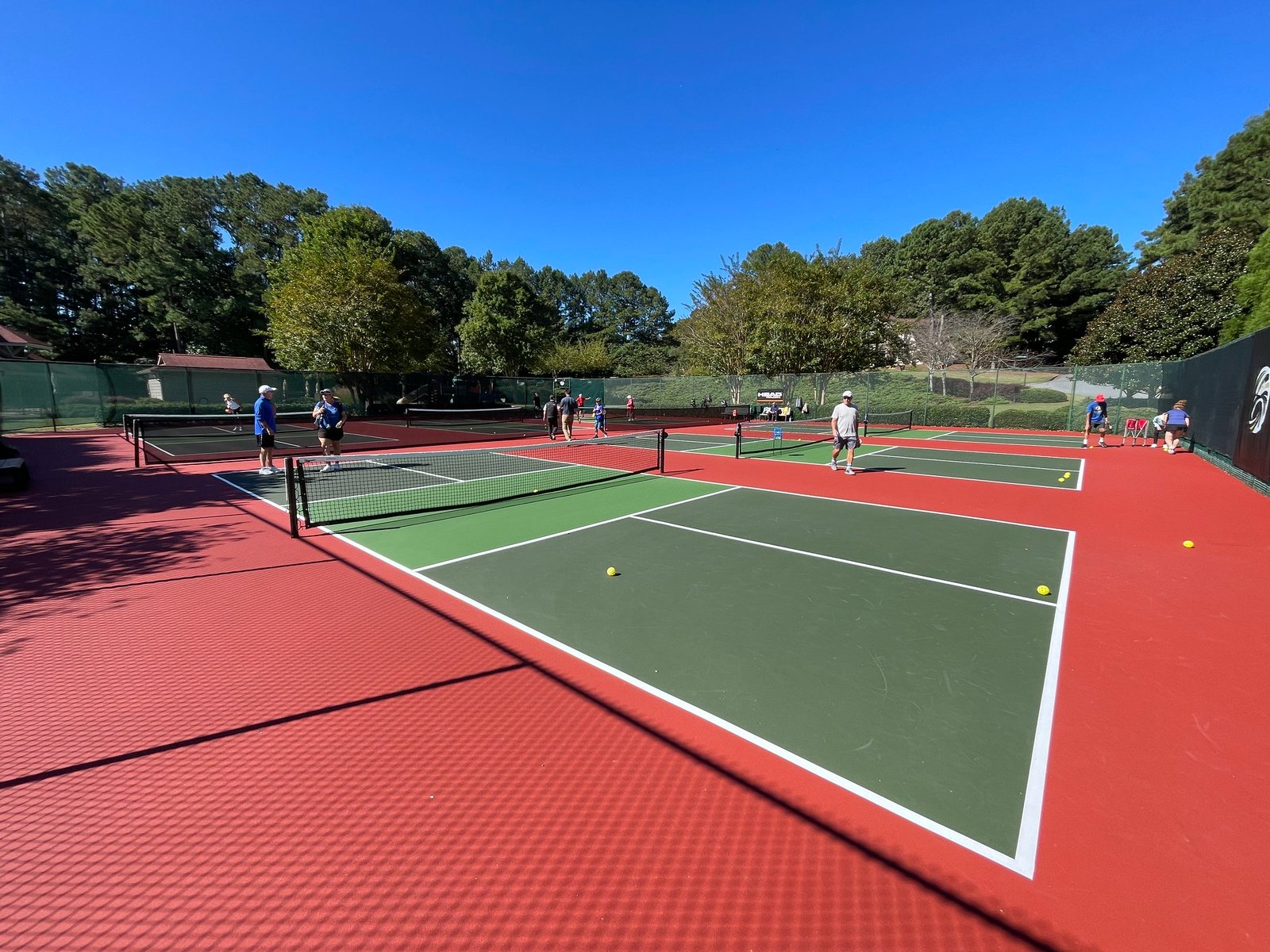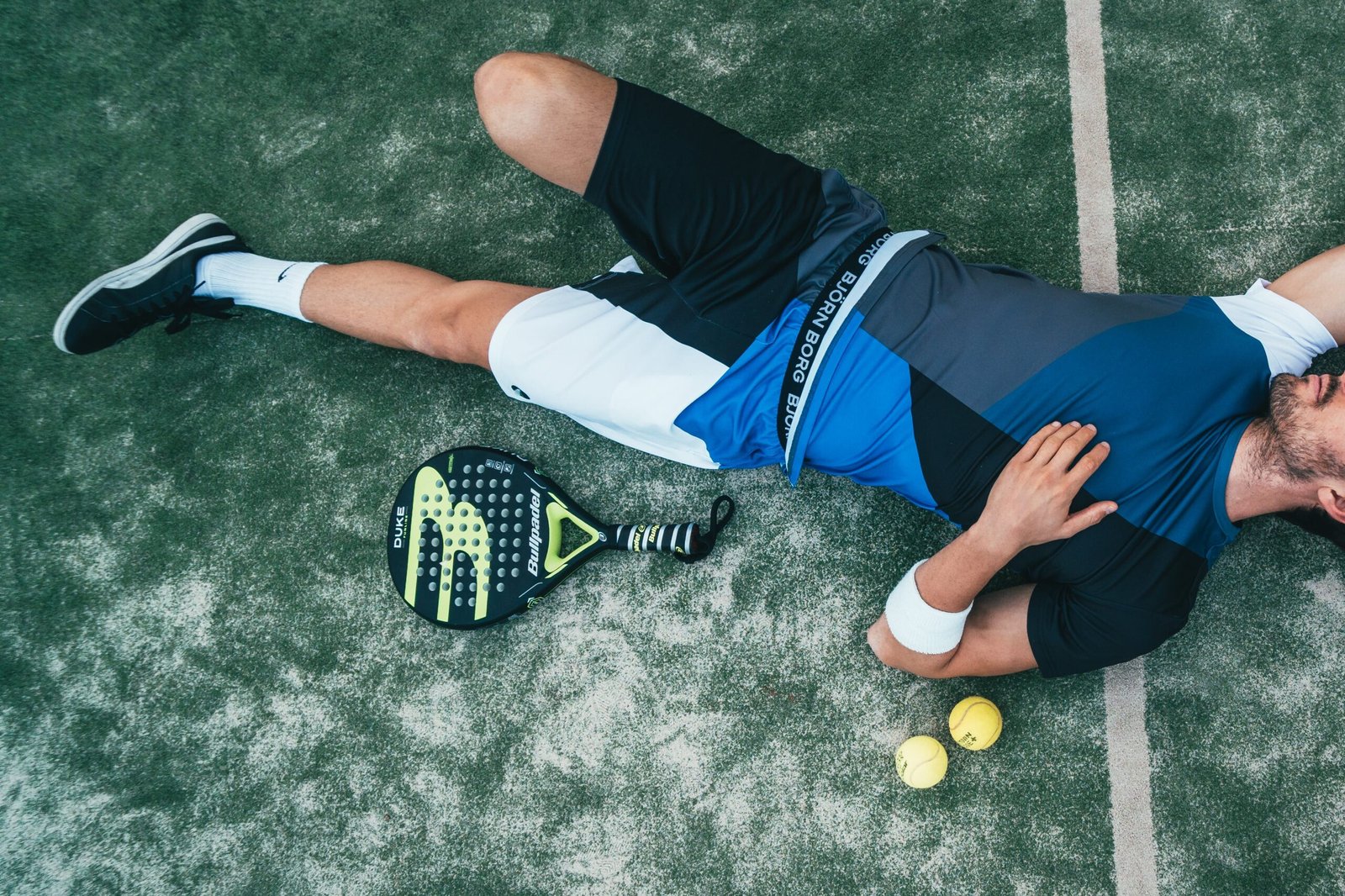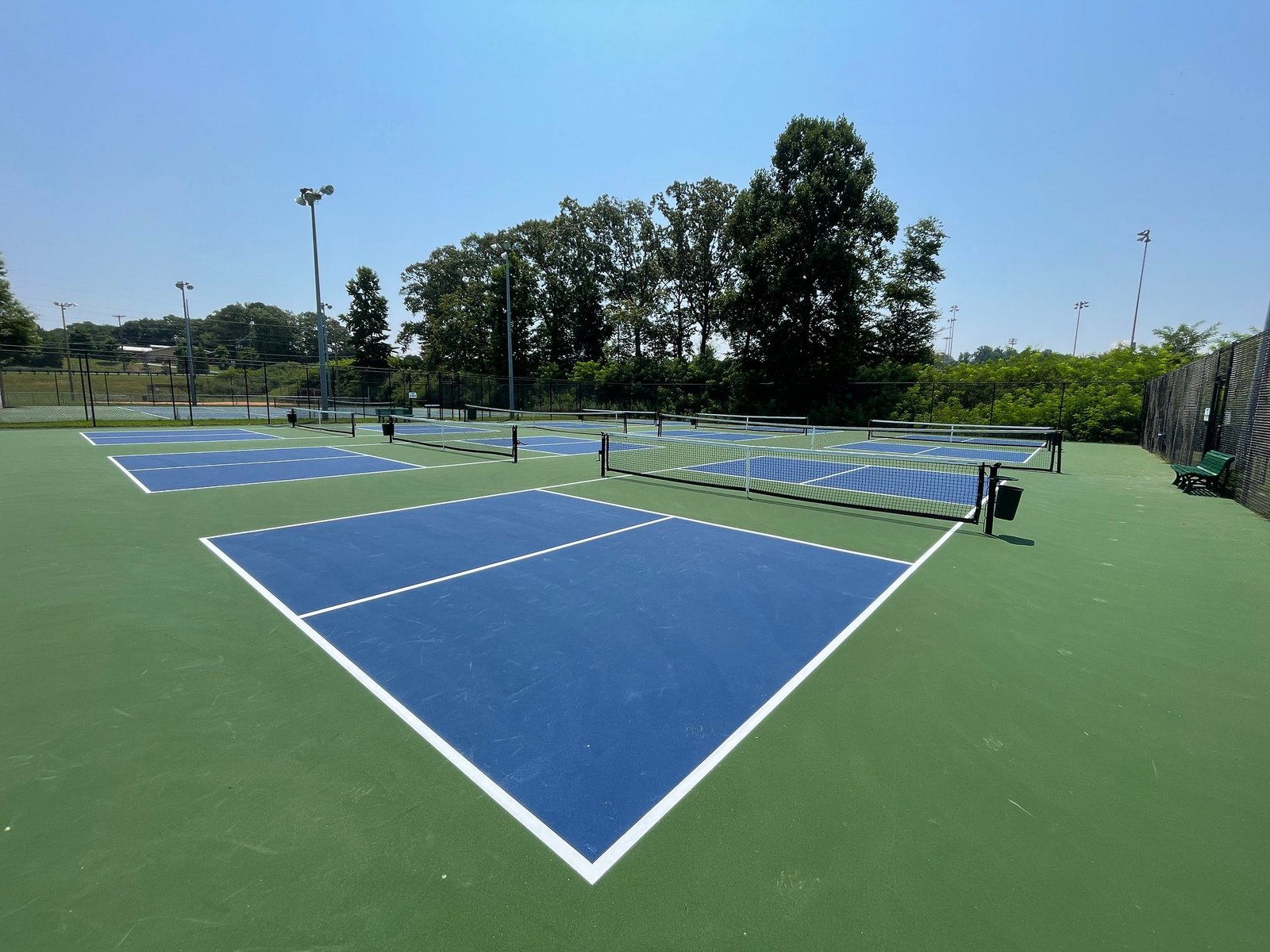In sports, where precision and agility can be the difference between victory and defeat, selecting the appropriate footwear is a crucial consideration. This holds especially true for pickleball, a fast-paced and rapidly growing sport that demands quick lateral movements, sudden stops, and agile footwork. In this exploration, we delve into the nuanced choice between using dedicated pickleball shoes and the more ubiquitous running shoes on the pickleball court. As enthusiasts of the sport seek to optimize their performance, one key aspect often overlooked is the selection of footwear tailored to the specific demands of pickleball.
While running shoes are a staple for many athletic activities, the unique requirements of pickleball introduce a set of considerations that extend beyond the conventional uses of running footwear. The pickleball court, typically surfaced with asphalt or similar materials, places distinct demands on shoes in terms of traction, durability, and lateral support. Running shoes, designed primarily for forward motion on diverse surfaces, may need more specialized features essential for the rapid side-to-side movements inherent in pickleball.
Traction is paramount in pickleball, where split-second changes in direction can determine the outcome of a rally. Dedicated pickleball shoes often feature outsoles crafted to provide optimal grip on the court surface, preventing slips and enhancing stability during lateral maneuvers. Additionally, the durability of the shoe becomes a critical factor, as the abrasive nature of pickleball courts can wear out standard running shoe outsoles faster than anticipated.
Support and cushioning are other pivotal elements in the footwear equation. Pickleball entails sudden stops, starts, and frequent lateral shifts, necessitating shoes with robust support structures to minimize the risk of injuries. The strategic placement of cushioning in pickleball shoes caters to the specific impact points associated with the sport, ensuring both comfort and protection during intense gameplay.
As we embark on this exploration, we aim to unravel the intricacies of this choice between running shoes and dedicated pickleball shoes, shedding light on why the proper footwear can be a game-changer in the exhilarating world of pickleball.
Table of Contents
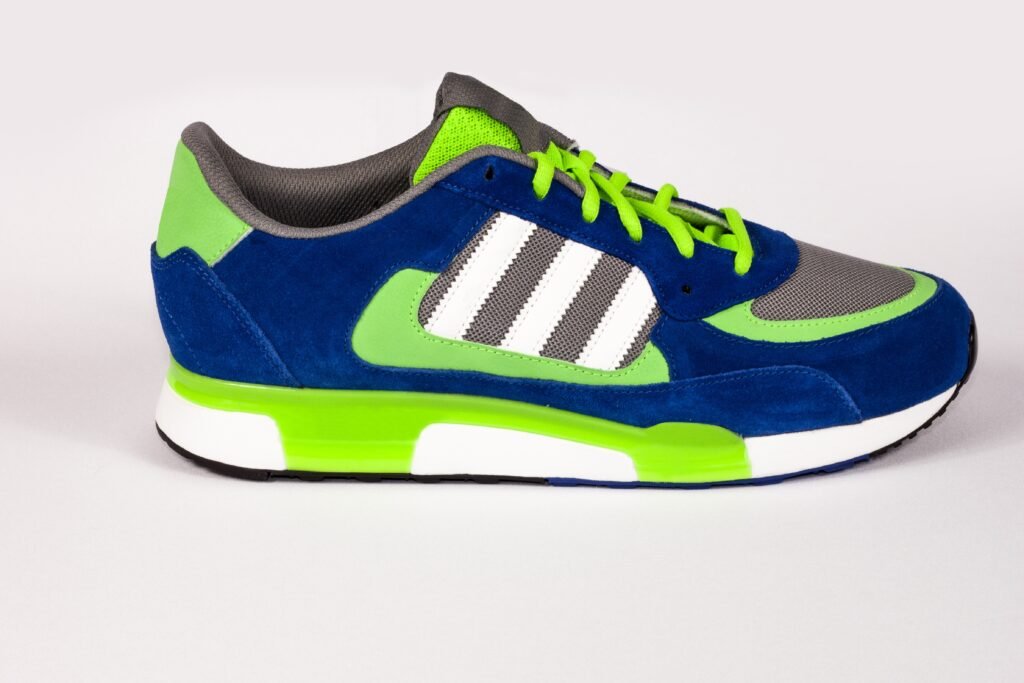
What kind of shoes do you wear to play pickleball?
Choosing the right shoes for pickleball is a critical decision for sports enthusiasts. Dedicated pickleball shoes are often favored over other types of athletic footwear for several reasons. These shoes are specifically designed to meet the unique demands of pickleball, offering a combination of features that enhance performance and reduce the risk of injuries.
Pickleball shoes are engineered with a focus on lateral support, a crucial element given the side-to-side movements inherent in the sport. The quick stops starts, and changes in direction require shoes that provide stability and prevent the risk of rolling an ankle. Unlike running shoes, which primarily support forward motion, pickleball shoes are designed to withstand the rapid lateral movements that are characteristic of the game.
Traction is another critical consideration. Pickleball courts are commonly made of materials like asphalt or similar hard surfaces. Pickleball shoes typically have non-marking outsoles with a tread pattern that offers excellent grip on these surfaces. This feature is essential for maintaining balance and agility during the dynamic gameplay of pickleball.
Durability is addressed in pickleball shoes through reinforced areas, particularly in the toe and medial (inner) sides. This reinforcement helps protect the shoes from abrasion caused by frequent toe drags and lateral shuffles, extending the lifespan of the footwear.
Additionally, pickleball shoes often incorporate cushioning strategically placed to absorb impact during intense rallies. The combination of support, traction, and cushioning makes pickleball shoes a preferred choice for players who are serious about their game and wish to optimize their on-court performance.
So, when gearing up for a game of pickleball, choosing dedicated pickleball shoes can contribute significantly to your overall playing experience, providing the support and functionality required to navigate the court with precision and confidence.

Do you really need pickleball shoes?
The question of whether one really needs pickleball shoes is a nuanced consideration that takes into account the unique demands of the sport, player preferences, and the pursuit of optimal performance and safety on the court. While it’s technically possible to play pickleball in regular athletic shoes, there are compelling reasons why dedicated pickleball shoes are increasingly regarded as essential gear for enthusiasts of the sport.
Pickleball, a high-energy racquet sport, involves a combination of quick lateral movements, sudden stops, and agile footwork. The choice of footwear significantly impacts a player’s ability to navigate the court effectively and reduce the risk of injuries. Dedicated pickleball shoes are specifically designed to address the sport’s unique requirements, offering features that may be lacking in traditional athletic footwear.
One key aspect is traction. Pickleball courts typically have surfaces made of asphalt or similar materials, which demand a high level of traction to support the frequent side-to-side movements and quick changes in direction inherent in the game. Pickleball shoes often come with specialized outsoles that provide superior grip on these surfaces, enhancing stability and minimizing the risk of slips and falls.
Durability is another crucial factor. The abrasive nature of pickleball courts can wear out regular athletic shoe outsoles more quickly than anticipated, leading to a shorter lifespan for the footwear. Pickleball shoes are crafted with reinforced materials to withstand the specific challenges posed by the court surface, ensuring longevity and sustained performance.
Support and cushioning are also paramount considerations. Pickleball involves abrupt stops and starts, and the lateral movements can strain the feet and ankles. Pickleball shoes typically offer enhanced support structures and strategically placed cushioning to provide comfort and reduce the risk of injuries during intense gameplay.
While one could technically play pickleball in running shoes or other athletic footwear, the advantages offered by dedicated pickleball shoes in terms of traction, durability, and support make them a valuable investment for players looking to optimize their performance and overall enjoyment of the sport. Ultimately, the decision to invest in pickleball shoes is a personal one, but their tailored features undoubtedly contribute to a more comfortable and secure playing experience on the court.
Can I use running shoes for pickleball?
Using running shoes for pickleball is possible, but it’s essential to consider certain factors to ensure optimal performance, comfort, and safety on the pickleball court. Here are some key points to keep in mind:
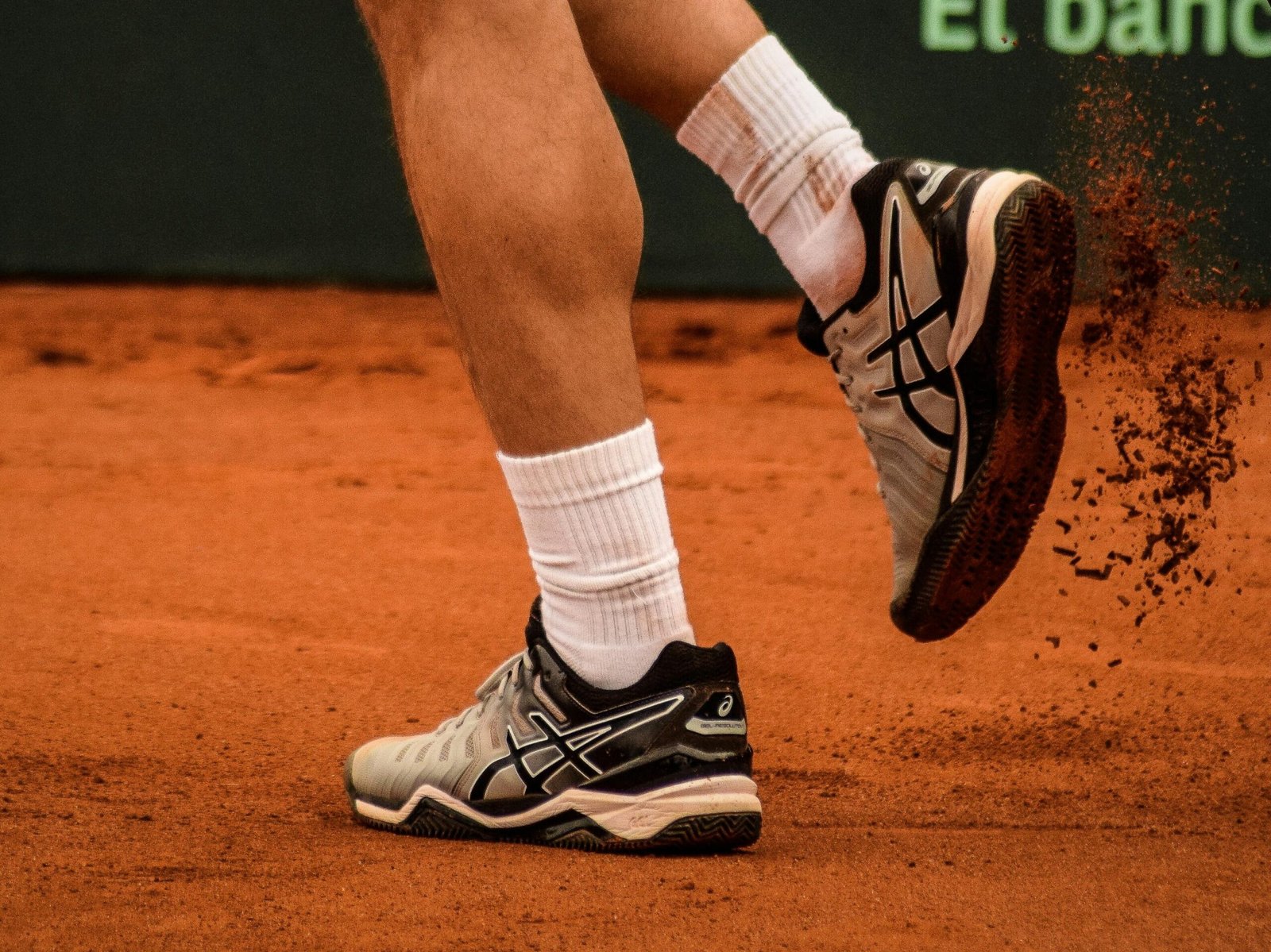
- Traction
Running shoes, while adept at facilitating forward motion on diverse surfaces, often need to catch up when it comes to providing the lateral support required for the frequent side-to-side movements integral to pickleball. The dynamic nature of pickleball, a sport that amalgamates elements of tennis, badminton, and table tennis, demands swift lateral transitions and sudden changes in direction. Running shoes, primarily engineered for linear movement, may not offer the necessary stability for these lateral maneuvers.
In the fast-paced environment of a pickleball court, quick lateral movements are a constant. The sport’s intensity requires shoes with robust traction to ensure stability and minimize the risk of slipping. The court’s surface, typically composed of asphalt or similar materials, demands a specialized grip that caters to the rapid changes in direction inherent to pickleball. Footwear designed specifically for pickleball often features outsoles crafted with the necessary traction patterns to enhance grip, providing players with the confidence to execute agile movements without the concern of slipping. In essence, the distinct demands of pickleball underscore the importance of selecting footwear that not only accommodates forward motion but also prioritizes lateral support and superior traction for a well-rounded and secure playing experience.
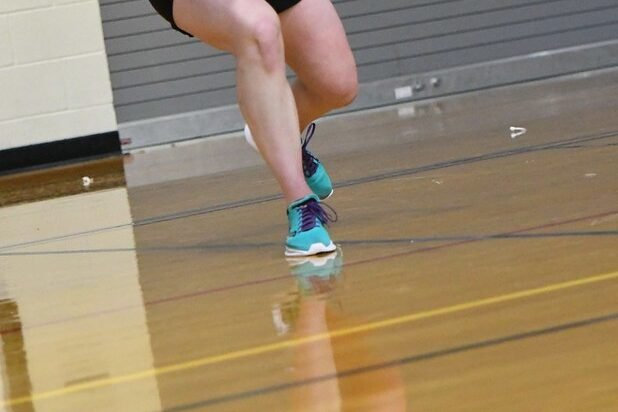
- Durability
Pickleball courts, characterized by surfaces predominantly composed of asphalt or similar materials, pose unique challenges for footwear durability. Running shoes, while suitable for various terrains, may not withstand the abrasive nature of pickleball courts over time. The specialized demands of the sport, including rapid lateral movements and sudden stops, can lead to accelerated wear and tear on standard running shoe outsoles.
To address these specific challenges, pickleball shoes are meticulously designed with reinforced areas strategically placed to endure the abrasion generated by the court surface. These reinforced sections not only enhance the longevity of the shoe but also provide crucial protection against the stresses induced by the rapid side-to-side maneuvers inherent in pickleball. The resilience of these reinforced zones ensures that pickleball shoes maintain their structural integrity, offering players sustained performance and support throughout their time on the court. In contrast, the standard construction of running shoes may lack the necessary reinforcements, making them more susceptible to premature deterioration when subjected to the rigorous demands of pickleball gameplay on distinct court surfaces.

- Support
Pickleball, a dynamic racquet sport, demands agility with its frequent stops, starts, and lateral movements on the court. The crucial role of proper footwear in injury prevention becomes evident in this context. Shoes tailored to the specific demands of pickleball are designed with features that provide essential support for these rapid shifts in direction.
Running shoes, although suitable for forward motion in activities like jogging, lack the specialized support required for the lateral movements intrinsic to pickleball. The design focus of running shoes primarily caters to the linear nature of running, neglecting the nuanced requirements of sports involving multidirectional footwork. This deficiency can expose players to an increased risk of injuries, especially considering the abrupt stops and swift changes in direction prevalent in pickleball.
Choosing footwear with optimized lateral support becomes paramount to effectively navigate the unique challenges posed by the pickleball court effectively. Dedicated pickleball shoes address this need, featuring designs that enhance stability during lateral movements, ultimately reducing the strain on joints and minimizing the potential for injuries. In the fast-paced environment of pickleball, where split-second decisions and agile footwork are the norm, investing in shoes crafted explicitly for the sport can significantly contribute to both performance and player safety.
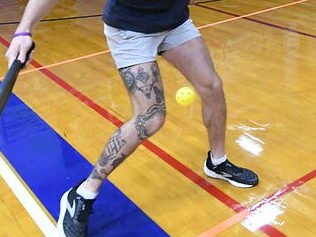
- Cushioning
In sports, the significance of footwear becomes evident when considering the nuanced differences in impact experienced during various activities. While both running and pickleball entail physical exertion, the nature and distribution of effects on the feet can vary significantly. This divergence underscores the importance of specialized footwear for pickleball, a sport characterized by rapid lateral movements and sudden stops.
Pickleball shoes are meticulously designed to address the specific impact patterns associated with the game. Unlike the predominantly forward motion in the running, pickleball necessitates quick side-to-side maneuvers, placing distinct stress on the feet. In response to these demands, pickleball shoes feature targeted cushioning in specific areas strategically placed to provide optimal support during lateral movements and abrupt stops. This specialized cushioning not only enhances comfort but also helps mitigate the risk of injuries resulting from the unique stresses imposed by the sport.
The emphasis on cushioning in pickleball shoes reflects a tailored approach to foot protection, recognizing that the impact forces and directional shifts in the sport differ from the more linear movements of running. As players navigate the pickleball court, the thoughtfully positioned cushioning becomes a vital component, contributing to a supportive and injury-resistant footwear solution tailored to the distinctive challenges posed by this exhilarating racquet sport.

- Weight
Pickleball’s fast-paced nature demands agility and swift footwork, making footwear a critical aspect of gameplay. Dedicated pickleball shoes are specifically engineered to be lightweight, prioritizing agility and responsiveness on the court. In contrast, running shoes, while suitable for forward motion, may carry additional bulk that can impact a player’s agility during lateral movements.
The design philosophy behind pickleball shoes emphasizes minimizing weight to enhance maneuverability, ensuring players can make rapid side-to-side transitions with ease. This lightweight construction facilitates quick starts, stops, and changes in direction, crucial elements in the dynamic and unpredictable nature of pickleball rallies.
Running shoes designed for linear movement may have additional cushioning and support features that contribute to their bulkier profile. This added weight can impede the skill required for the intricate footwork demanded by pickleball. In a sport where split-second reactions can be the difference between winning and losing a point, the agility afforded by lightweight pickleball shoes becomes a distinct advantage.
The lightweight design of pickleball shoes is a testament to the sport’s unique demands, ensuring players can move swiftly and responsively across the court, reacting quickly to the ever-changing dynamics of the game. The choice between pickleball shoes and running shoes becomes not just a matter of preference but a strategic consideration for those seeking optimal agility and performance on the pickleball court.
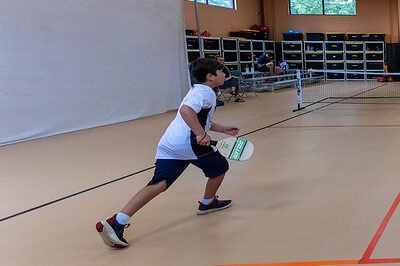
- Toe Drag
In pickleball, where agility and precision are paramount, the nuanced footwork involved often includes quick slides and toe drags. These particular movements, integral to strategic plays and swift maneuvers, underscore the importance of specialized footwear on the pickleball court.
Pickleball shoes are meticulously designed to cater to the specific demands of the sport, recognizing the need for features that resist abrasion during quick slides and toe drags. Unlike running shoes, which primarily prioritize forward motion, pickleball shoes often incorporate reinforced materials and protective elements in key areas. These enhancements not only guard against wear and tear but also contribute to the longevity of the footwear.
The frequent lateral shifts and abrupt stops in pickleball can subject shoes to considerable stress, making durability a critical factor. Pickleball shoes, with their tailored construction, offer a robust defense against the abrasive nature of the court surface. This specialized design not only promotes a longer lifespan for the shoes but also ensures sustained performance, allowing players to execute slides and toe-drags with confidence, knowing that their footwear is adept at withstanding the rigors of the game. In contrast, the absence of these features in conventional running shoes may compromise performance and expose players to increased risks of discomfort and shoe damage during such intricate movements on the pickleball court.
- Court Regulations
Before lacing up your shoes for a game of pickleball, it’s essential to be aware that certain courts may have specific regulations governing footwear. Many pickleball facilities enforce guidelines regarding the types of shoes permitted on their courts, aiming to maintain the integrity of the playing surface and ensure the safety of players.
These regulations often stem from the desire to preserve the court surface, which is typically made of materials like asphalt. The wrong type of shoes can contribute to premature wear and tear, affecting the court’s quality and longevity. Additionally, specific shoe requirements may be in place to enhance player safety, promoting an environment where participants can confidently engage in the quick lateral movements and stops intrinsic to pickleball.
To avoid any complications, it is advisable to check the rules and guidelines at the pickleball facility where you intend to play. Some venues may explicitly recommend or require dedicated pickleball shoes, while others may have broader guidelines encompassing appropriate footwear for court sports. Adhering to these regulations not only ensures compliance with facility rules but also contributes to a positive playing experience for all participants, fostering a court environment that prioritizes both fair play and the preservation of the playing surface.
While it’s possible to use running shoes for pickleball, they may not offer the ideal support, traction, and durability required for the dynamic movements and court surface of pickleball. Pickleball, characterized by rapid lateral shifts and sudden stops, demands specialized features in footwear that go beyond the typical design of running shoes.
Running shoes, designed primarily for forward motion on various surfaces, may lack the lateral support necessary for the quick side-to-side movements prevalent in pickleball. The sport-specific demands of pickleball courts, often surfaced with asphalt or similar materials, necessitate shoes with superior traction to prevent slips and enhance stability during gameplay.
Furthermore, the durability of running shoes may be compromised on the abrasive pickleball court surface, leading to quicker wear and potential performance degradation. Investing in dedicated pickleball shoes becomes particularly relevant for players who are serious about the sport, offering tailored features such as reinforced outsoles, targeted cushioning, and robust support structures to cater to the unique challenges posed by pickleball.
So, while running shoes can serve as a makeshift option, dedicated pickleball shoes are recommended for those seeking an optimal playing experience and aiming to minimize the risk of injuries on the pickleball court.


